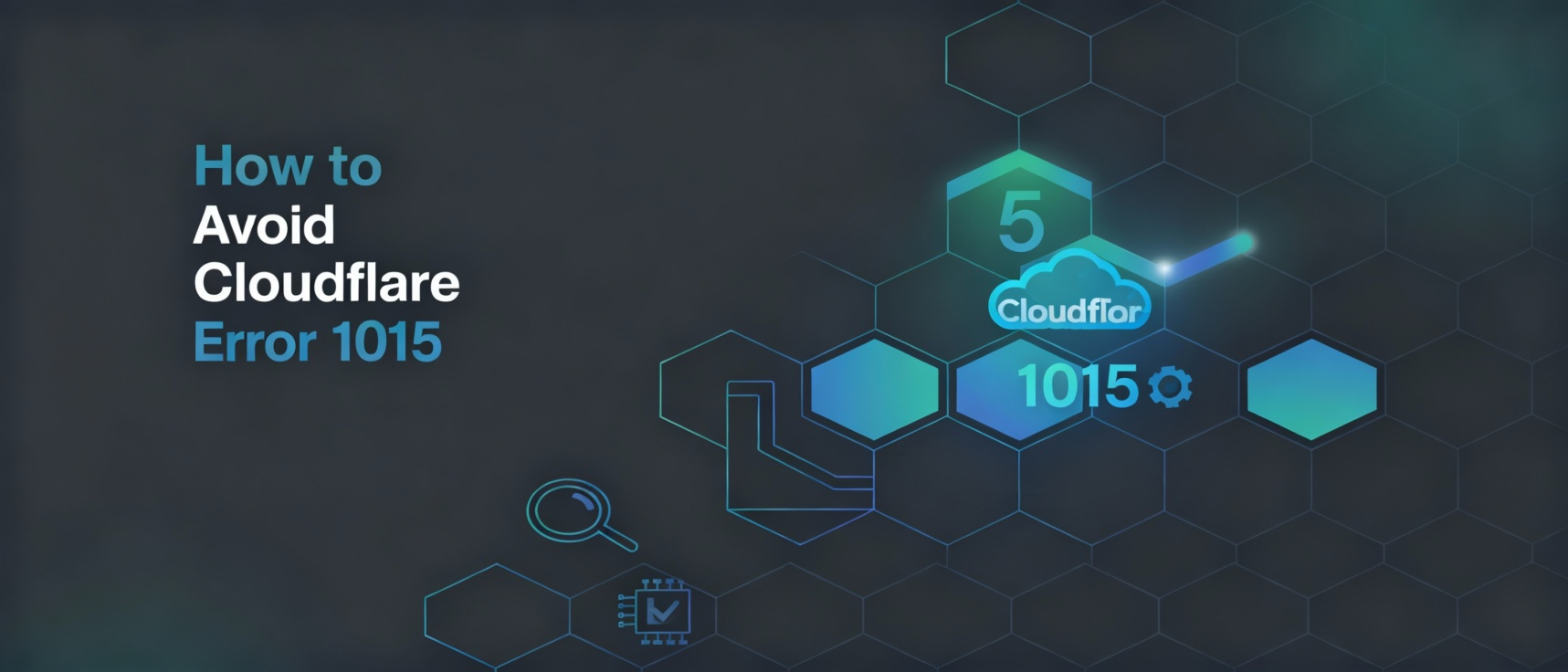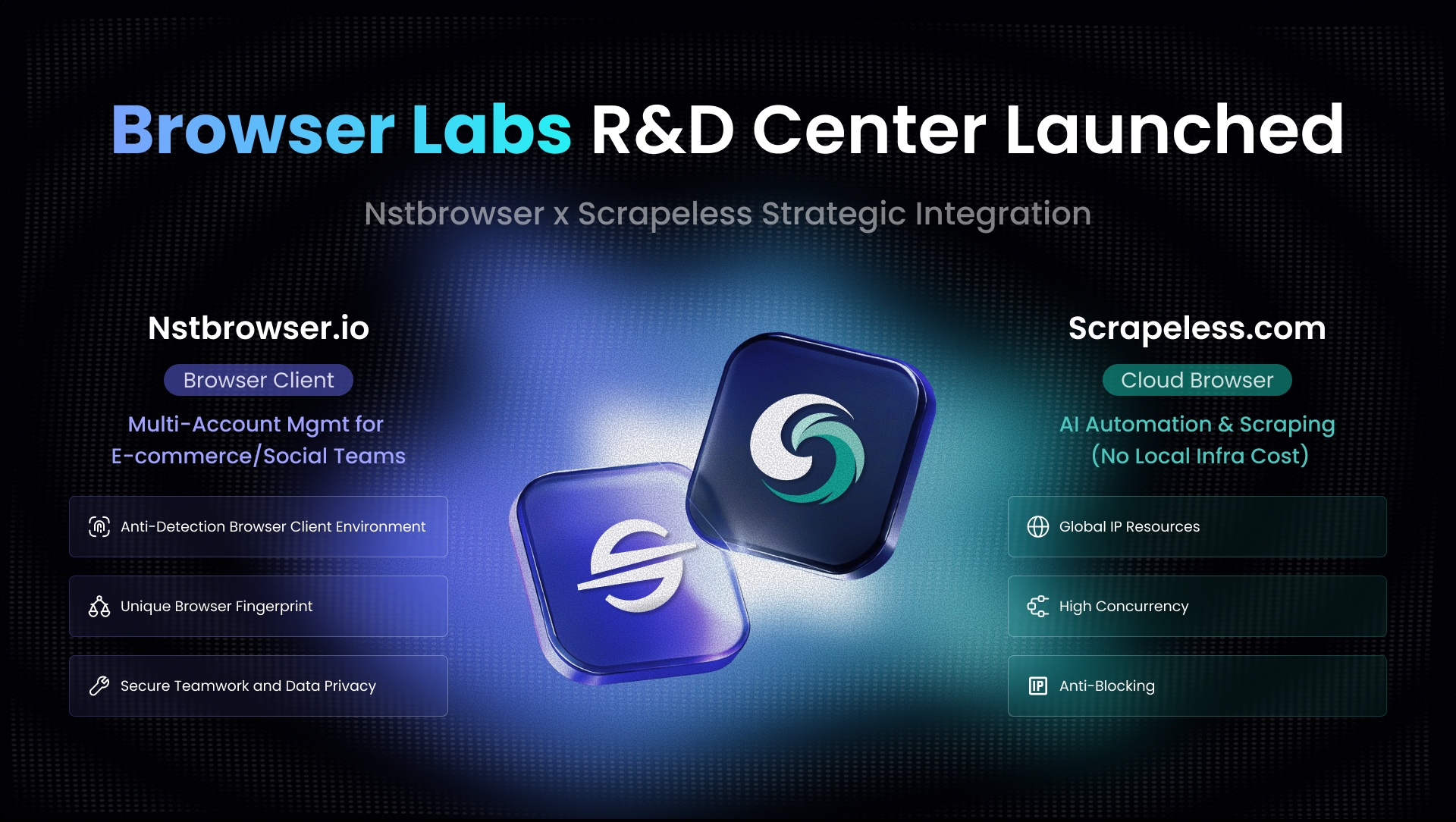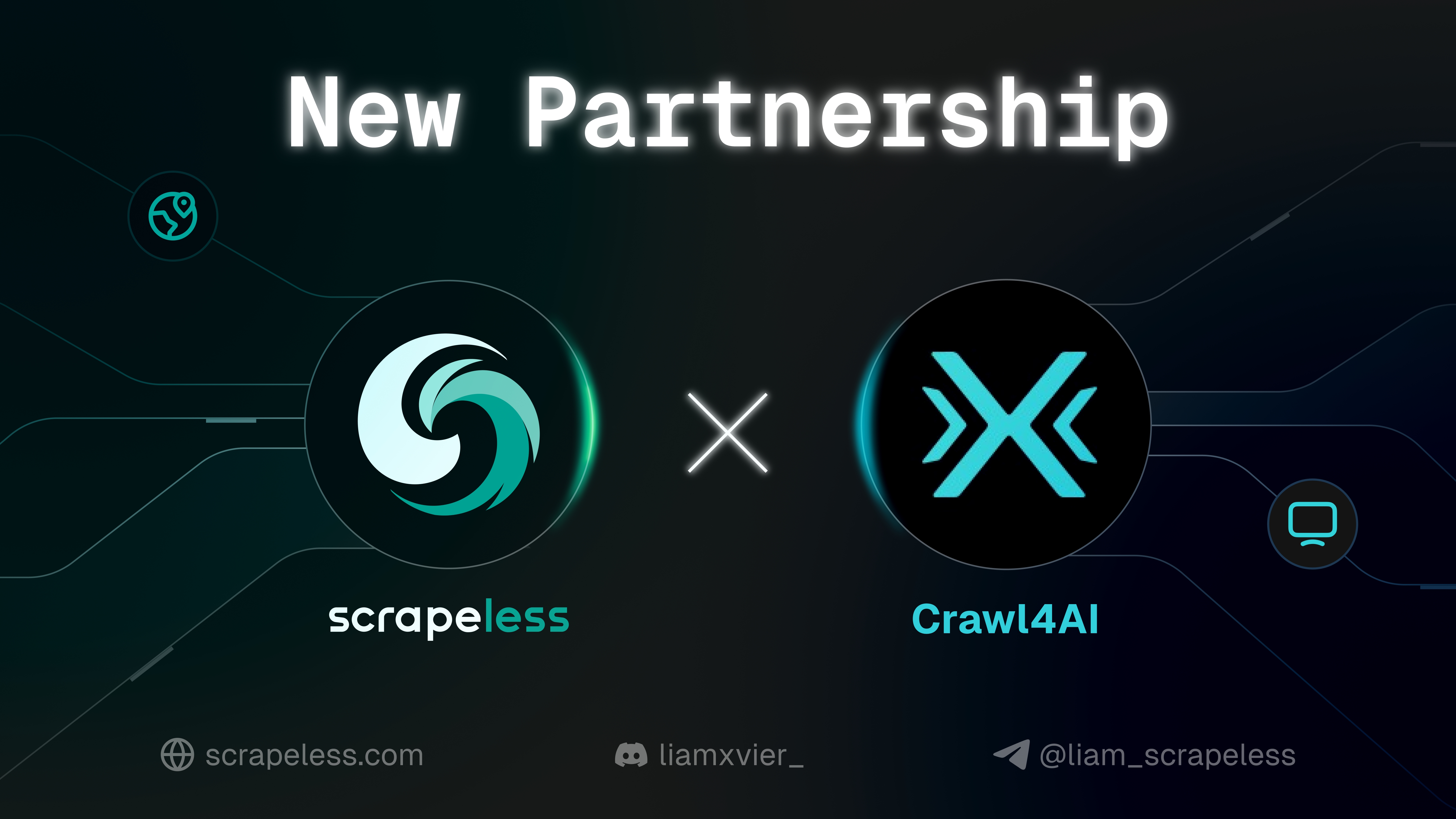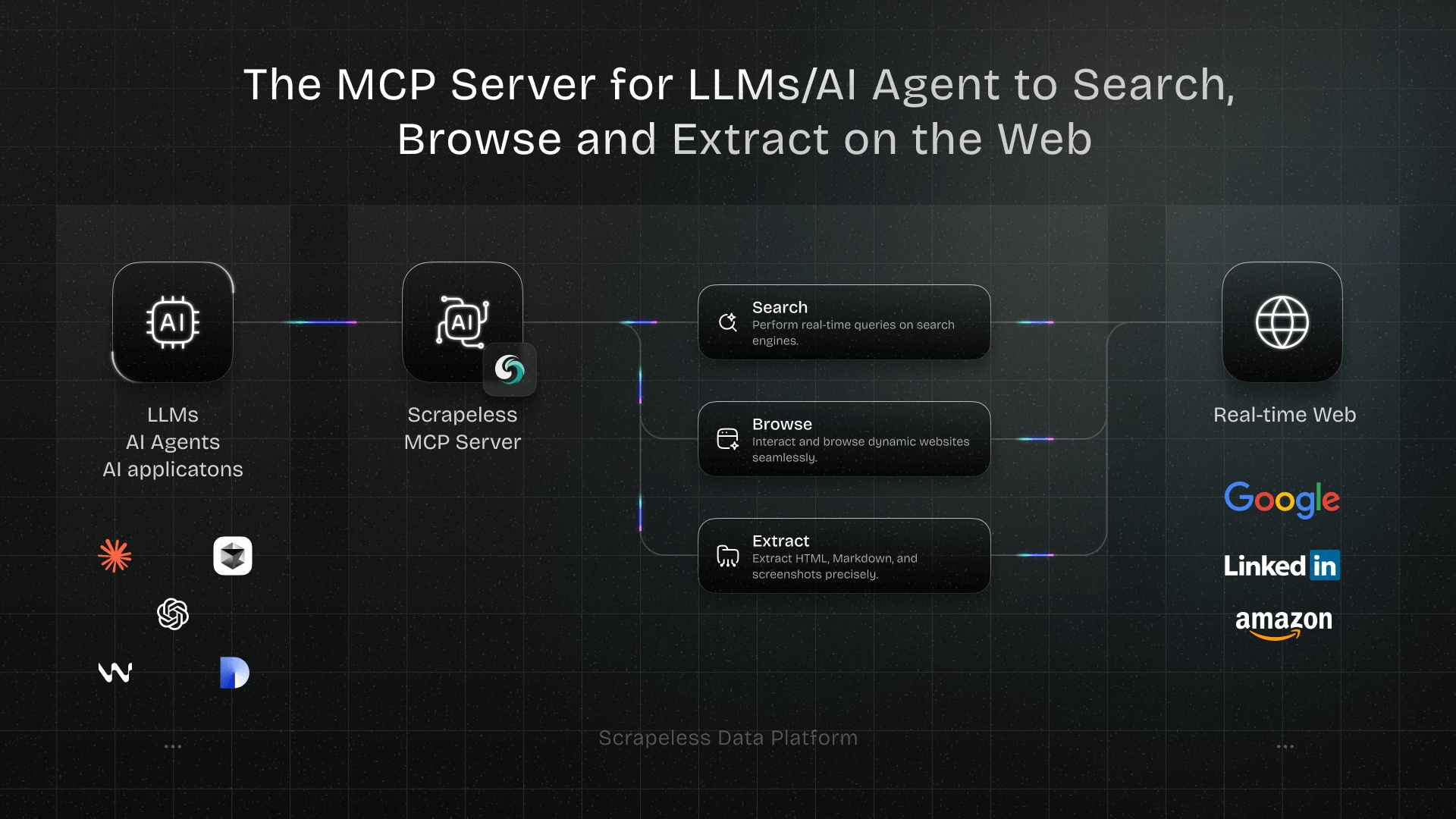How to Avoid Cloudflare Error 1015: Definitive Guide 2025
Expert Network Defense Engineer
Key Takeaways:
- Cloudflare Error 1015 signifies that your requests have exceeded a website's rate limits, leading to a temporary block.
- This error is a common challenge for web scrapers, automated tools, and even regular users with unusual browsing patterns.
- Effective strategies to avoid Error 1015 include meticulously reducing request frequency, intelligently rotating IP addresses, leveraging residential or mobile proxies, and implementing advanced scraping solutions that mimic human behavior.
- Specialized web scraping APIs like Scrapeless offer a comprehensive, automated solution to handle rate limiting and other anti-bot measures, significantly simplifying the process.
Introduction
Encountering a Cloudflare Error 1015 can be a significant roadblock, whether you're a casual website visitor, a developer testing an application, or a professional engaged in web scraping. This error message, frequently accompanied by the clear directive "You are being rate limited," is Cloudflare's way of indicating that your IP address has been temporarily blocked. This block occurs because your requests to a particular website have exceeded a predefined threshold within a specific timeframe. Cloudflare, a leading web infrastructure and security company, deploys such measures to protect its clients' websites from various threats, including DDoS attacks, brute-force attempts, and aggressive data extraction.
For anyone involved in automated web activities, from data collection and market research to content aggregation and performance monitoring, Error 1015 represents a common and often frustrating hurdle. It signifies that your interaction pattern has been flagged as suspicious or excessive, triggering Cloudflare's protective mechanisms. This definitive guide for 2025 aims to thoroughly demystify Cloudflare Error 1015, delve into its underlying causes, and provide a comprehensive array of actionable strategies to effectively avoid it. By understanding and implementing these techniques, you can ensure your web operations run more smoothly, efficiently, and without interruption.
Understanding Cloudflare Error 1015: The Rate Limiting Challenge
Cloudflare Error 1015 is a specific HTTP status code that is returned by Cloudflare's network when a client—be it a standard web browser or an automated script—has violated a website's configured rate limiting rules. Fundamentally, this error means that your system has sent an unusually high volume of requests to a particular website within a short period, thereby triggering Cloudflare's robust protective mechanisms. This error is a direct consequence of the website owner having implemented Cloudflare's powerful Rate Limiting feature, which is meticulously designed to safeguard their servers from various forms of abuse, including Distributed Denial of Service (DDoS) attacks, malicious bot activity, and overly aggressive web scraping [1].
It's crucial to understand that when you encounter an Error 1015, Cloudflare is not necessarily imposing a permanent ban. Instead, it's a temporary, automated measure intended to prevent the exhaustion of resources on the origin server. The duration of this temporary block can vary significantly, ranging from a few minutes to several hours, or even longer in severe cases. This variability depends heavily on the specific rate limit thresholds configured by the website owner and the perceived severity of your rate limit violation. Cloudflare's system dynamically adjusts its response based on the detected threat level and the website's protection settings.
Common Scenarios Leading to Error 1015:
Several common patterns of web interaction can inadvertently lead to the activation of Cloudflare's Error 1015:
- Aggressive Web Scraping: This is perhaps the most frequent cause. Automated scripts, by their nature, can send requests to a server far more rapidly than any human user. If your scraping bot sends a high volume of requests in a short period from a single IP address, it will almost certainly exceed the defined rate limits, leading to a block.
- DDoS-like Behavior (Even Unintentional): Even if your intentions are benign, an unintentional rapid-fire sequence of requests can mimic the characteristics of a Distributed Denial of Service (DDoS) attack. Cloudflare's primary role is to protect against such threats, and it will activate its defenses accordingly, resulting in an Error 1015.
- Frequent API Calls: Many websites expose Application Programming Interfaces (APIs) for programmatic access to their data. If your application makes too many calls to these APIs within a short window, you are likely to hit the API's rate limits, which are often enforced by Cloudflare, even if you are not technically scraping the website in the traditional sense.
- Shared IP Addresses: If you are operating from a shared IP address environment—such as a corporate network, a Virtual Private Network (VPN), or public Wi-Fi—and another user sharing that same IP address triggers the rate limit, your access might also be inadvertently affected. Cloudflare sees the IP, not the individual user.
- Misconfigured Automation Tools: Poorly designed or misconfigured bots and automated scripts that fail to respect
robots.txtdirectives or neglect to implement proper, randomized delays between requests can very quickly trigger rate limits. Such tools often behave in a predictable, non-human-like manner that is easily identifiable by Cloudflare.
Understanding that Error 1015 is fundamentally a rate-limiting response, rather than a generic block, is the critical first step toward effectively diagnosing and avoiding it. It serves as a clear signal that your current pattern of requests is perceived as abusive or excessive by the website's Cloudflare configuration, necessitating a change in approach.
Strategies to Avoid Cloudflare Error 1015
Avoiding Cloudflare Error 1015 primarily involves making your requests appear less like automated, aggressive traffic and more like legitimate user behavior. Here are several effective strategies:
1. Reduce Request Frequency and Implement Delays
The most straightforward way to avoid rate limiting is to simply slow down. Introduce randomized delays between requests to mimic human browsing patterns. This keeps your request rate below the website's threshold.
Code Example (Python):
python
import requests
import time
import random
urls_to_scrape = ["https://example.com/page1"]
for url in urls_to_scrape:
try:
response = requests.get(url)
response.raise_for_status()
print(f"Fetched {url}")
except requests.exceptions.RequestException as e:
print(f"Error fetching {url}: {e}")
time.sleep(random.uniform(3, 7)) # Random delayPros: Simple, effective for basic limits, resource-friendly.
Cons: Slows scraping, limited efficacy against advanced anti-bot measures.
2. Rotate IP Addresses with Proxies
Cloudflare's rate limiting is often IP-based. Distribute your requests across multiple IP addresses using a proxy service. Residential and mobile proxies are highly effective as they appear more legitimate than datacenter proxies.
Code Example (Python with requests and a proxy list):
python
import requests
import random
import time
proxy_list = ["http://user:pass@proxy1.example.com:8080"]
urls_to_scrape = ["https://example.com/data1"]
for url in urls_to_scrape:
proxy = random.choice(proxy_list)
proxies = {"http": proxy, "https": proxy}
try:
response = requests.get(url, proxies=proxies, timeout=10)
response.raise_for_status()
print(f"Fetched {url} using {proxy}")
except requests.exceptions.RequestException as e:
print(f"Error fetching {url} with {proxy}: {e}")
time.sleep(random.uniform(5, 10)) # Random delayPros: Highly effective against IP-based limits, increases throughput.
Cons: Costly, complex management, proxy quality varies.
3. Rotate User-Agents and HTTP Headers
Anti-bot systems analyze HTTP headers. Rotate User-Agents and include a full set of realistic headers (e.g., Accept, Accept-Language, Referer) to mimic a real browser. This enhances legitimacy and reduces detection.
Code Example (Python with requests and User-Agent rotation):
python
import requests
import random
import time
user_agents = ["Mozilla/5.0 (Windows NT 10.0; Win64; x64) AppleWebKit/537.36 (KHTML, like Gecko) Chrome/109.0.0.0 Safari/537.36"]
urls_to_scrape = ["https://example.com/item1"]
for url in urls_to_scrape:
headers = {"User-Agent": random.choice(user_agents), "Accept": "text/html,application/xhtml+xml", "Accept-Language": "en-US,en;q=0.5"}
try:
response = requests.get(url, headers=headers, timeout=10)
response.raise_for_status()
print(f"Fetched {url} with User-Agent: {headers['User-Agent'][:30]}...")
except requests.exceptions.RequestException as e:
print(f"Error fetching {url}: {e}")
time.sleep(random.uniform(2, 6)) # Random delayPros: Easy to implement, reduces detection when combined with other strategies.
Cons: Requires maintaining up-to-date User-Agents, not a standalone solution.
4. Mimic Human Behavior (Headless Browsers with Stealth)
For advanced anti-bot measures, use headless browsers (Puppeteer, Playwright) with stealth techniques. These execute JavaScript, render pages, and modify browser properties to hide common headless browser fingerprints, mimicking real user behavior.
Code Example (Python with Playwright and basic stealth concepts):
python
from playwright.sync_api import sync_playwright
import time
import random
def scrape_with_stealth_playwright(url):
with sync_playwright() as p:
browser = p.chromium.launch(headless=True)
page = browser.new_page()
page.set_extra_http_headers({"User-Agent": "Mozilla/5.0 (Windows NT 10.0; Win64; x64) AppleWebKit/537.36"})
page.set_viewport_size({"width": 1920, "height": 1080})
try:
page.goto(url, wait_until="domcontentloaded")
time.sleep(random.uniform(2, 5))
page.evaluate("window.scrollTo(0, document.body.scrollHeight)")
time.sleep(random.uniform(1, 3))
html_content = page.content()
print(f"Fetched {url} with Playwright stealth.")
except Exception as e:
print(f"Error fetching {url} with Playwright: {e}")
finally:
browser.close()Pros: Highly effective for JavaScript-based anti-bot systems, complete emulation of a real user.
Cons: Resource-intensive, slower, complex setup and maintenance, ongoing battle against evolving anti-bot techniques [1].
5. Implement Retries with Exponential Backoff
When an Error 1015 occurs, implement a retry mechanism with exponential backoff. Wait for an increasing amount of time between retries (e.g., 1s, 2s, 4s) to give the server a chance to recover or lift the temporary block. This improves scraper resilience.
Code Example (Python with requests and tenacity library):
python
import requests
from tenacity import retry, wait_exponential, stop_after_attempt, retry_if_exception_type
@retry(wait=wait_exponential(multiplier=1, min=4, max=10), stop=stop_after_attempt(5), retry=retry_if_exception_type(requests.exceptions.RequestException))
def fetch_url_with_retry(url):
print(f"Attempting to fetch {url}...")
response = requests.get(url, timeout=15)
response.raise_for_status()
if "1015 Rate limit exceeded" in response.text or response.status_code == 429:
raise requests.exceptions.RequestException("Cloudflare 1015/429 detected")
print(f"Fetched {url}")
return responsePros: Increases robustness, handles temporary blocks gracefully, reduces aggression.
Cons: Can lead to long delays, requires careful configuration, doesn't prevent initial trigger.
6. Utilize Web Unlocking APIs
For the most challenging websites, specialized Web Unlocking APIs (like Scrapeless) offer an all-in-one solution. They handle IP rotation, User-Agent management, headless browser stealth, JavaScript rendering, and CAPTCHA solving automatically.
Code Example (Python with requests and a conceptual Web Unlocking API):
python
import requests
import json
def scrape_with_unlocking_api(target_url, api_key, api_endpoint="https://api.scrapeless.com/v1/scrape"):
payload = {"url": target_url, "api_key": api_key, "render_js": True}
headers = {"Content-Type": "application/json"}
try:
response = requests.post(api_endpoint, headers=headers, data=json.dumps(payload), timeout=60)
response.raise_for_status()
response_data = response.json()
if response_data.get("status") == "success":
html_content = response_data.get("html")
if html_content: print(f"Fetched {target_url} via API.")
else: print(f"API error: {response_data.get("message")}")
except requests.exceptions.RequestException as e:
print(f"API request error: {e}")Pros: Highest success rate, simplest integration, no infrastructure management, highly scalable, time/cost savings.
Cons: Paid service, external dependency, less granular control.
Comparison Summary: Strategies to Avoid Cloudflare Error 1015
| Strategy | Effectiveness (against 1015) | Complexity (Setup/Maintenance) | Cost (Typical) | Speed Impact | Best For |
|---|---|---|---|---|---|
| 1. Reduce Request Frequency | Low to Medium | Low | Low (Free) | Very Slow | Simple, low-volume scraping; initial testing |
| 2. Rotate IP Addresses (Proxies) | Medium to High | Medium | Medium | Moderate | Medium-volume scraping; overcoming IP-based blocks |
| 3. Rotate User-Agents/Headers | Low to Medium | Low | Low (Free) | Low | Enhancing other strategies; basic anti-bot evasion |
| 4. Mimic Human Behavior (Headless + Stealth) | High | High | Low (Free) | Slow | JavaScript-heavy sites, advanced anti-bot, complex interactions |
| 5. Retries with Exponential Backoff | Medium | Medium | Low (Free) | Variable | Handling temporary blocks, improving scraper robustness |
| 6. Web Unlocking APIs | Very High | Low | Medium to High | Very Fast | All-in-one solution for complex sites, high reliability, low effort |
Why Scrapeless is Your Best Alternative
Implementing and maintaining strategies to avoid Cloudflare Error 1015, especially at scale, is challenging. Managing proxies, rotating User-Agents, configuring headless browsers, and building retry mechanisms demand significant effort and infrastructure. Scrapeless, a specialized Web Unlocking API, offers a definitive alternative by abstracting these complexities.
Scrapeless automatically bypasses Cloudflare and other anti-bot protections. It handles IP rotation, advanced anti-bot evasion (mimicking legitimate browser behavior), built-in CAPTCHA solving, and optimized request throttling. This simplified integration, coupled with its scalability and reliability, makes Scrapeless a superior choice. It allows you to focus on data analysis, not anti-bot evasion, ensuring reliable access to web data.
Conclusion and Call to Action
Cloudflare Error 1015 is a clear signal that your web requests have triggered a website's rate limiting mechanisms. While frustrating, understanding its causes and implementing proactive strategies can significantly improve your success rate in accessing web data. From simple delays and IP rotation to advanced headless browser techniques and CAPTCHA solving, a range of solutions exists to mitigate this common anti-bot challenge.
However, for those engaged in serious web scraping or automation, the continuous battle against evolving anti-bot technologies can be a drain on resources and development time. Managing complex infrastructure, maintaining proxy pools, and constantly adapting to new detection methods can quickly become unsustainable.
This is where a comprehensive Web Unlocking API like Scrapeless offers an unparalleled advantage. By automating all aspects of anti-bot evasion—including IP rotation, User-Agent management, JavaScript rendering, and CAPTCHA solving—Scrapeless transforms the challenge of Cloudflare Error 1015 into a seamless experience. It allows you to focus on extracting and utilizing data, rather than fighting against web protections.
Ready to overcome Cloudflare Error 1015 and access the web data you need?
Don't let rate limits and anti-bot measures hinder your data collection efforts. Discover how Scrapeless can provide reliable, uninterrupted access to any website. Start your free trial today and experience the power of effortless web data extraction.
Start Your Free Trial with Scrapeless Now!
Frequently Asked Questions (FAQ)
Q1: What exactly does Cloudflare Error 1015 mean?
Cloudflare Error 1015 means your IP address has been temporarily blocked by Cloudflare due to exceeding a website's defined rate limits. This is a security measure to protect the website from excessive requests, which could indicate a DDoS attack or aggressive web scraping.
Q2: How long does a Cloudflare 1015 block typically last?
The duration varies significantly based on the website's rate limiting configuration and violation severity. Blocks can last from a few minutes to several hours. Persistent aggressive behavior might lead to longer or permanent blocks.
Q3: Can I avoid Error 1015 by just using a VPN?
Using a VPN can change your IP, but it's not foolproof. Many VPN IPs are known to Cloudflare or shared by many users, quickly re-triggering rate limits. Residential or mobile proxies are generally more effective as their IPs appear more legitimate.
Q4: Is it ethical to try and bypass Cloudflare's rate limits?
Ethical considerations are crucial. While legitimate data collection might be acceptable, always respect robots.txt and terms of service. Aggressive scraping harming performance or violating policies can lead to legal issues. Aim for responsible and respectful practices.
Q5: When should I consider using a Web Unlocking API like Scrapeless?
Consider a Web Unlocking API like Scrapeless when: you frequently encounter Cloudflare Error 1015 or other anti-bot challenges; you need to scrape at scale without managing complex infrastructure; you want to reduce development time and maintenance; or you require high success rates and reliable access to data from challenging websites. These APIs abstract complexities, letting you focus on data extraction.
References
At Scrapeless, we only access publicly available data while strictly complying with applicable laws, regulations, and website privacy policies. The content in this blog is for demonstration purposes only and does not involve any illegal or infringing activities. We make no guarantees and disclaim all liability for the use of information from this blog or third-party links. Before engaging in any scraping activities, consult your legal advisor and review the target website's terms of service or obtain the necessary permissions.



